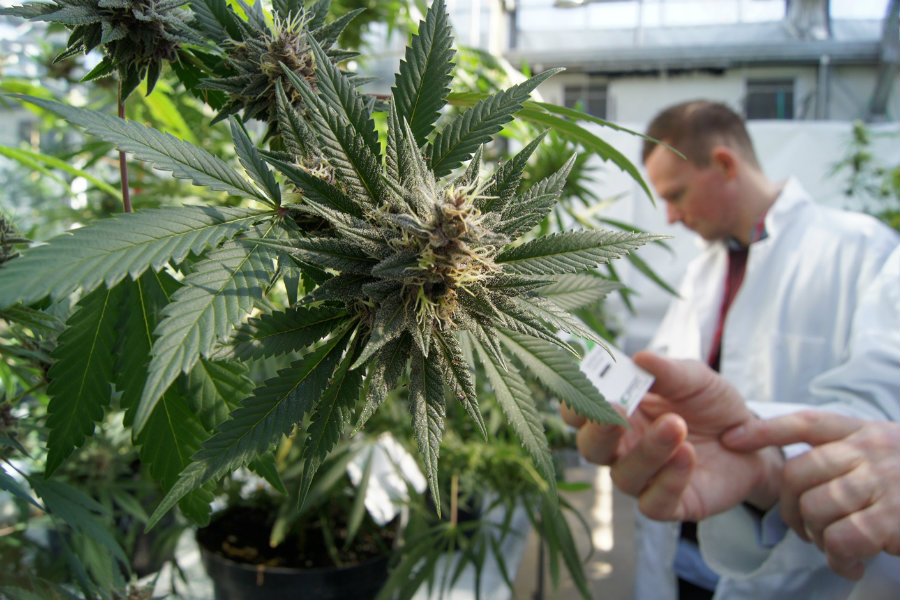A new analysis released Thursday by the Centers for Disease Control and Prevention (CDC) revealed that the number of people using marijuana skyrocketed since 2002 to 2014. There has been a 35 percent increase in consumption, from 6.2 percent in 2002 to 8.4 percent of the population in 2014. In addition, the number of Americans using pot daily or almost daily has nearly doubled.
In 2014, when the CDC conducted the latest studies on cannabis, two and a half million people in the United States tried the substance for the first time, which means that there were about 7,000 new pot users every day. There were 6,000 people using marijuana for the first time in 2002. Nearly 900,000 participants over the age of 12 took part in the National Survey on Drug Use and Health (NSDUH), an annual federal survey to measure substance use among Americans.


Puzzling results
So, more people are using pot now and even more are using it daily or almost daily. However, the researchers were surprised to find that the number of pot users who are considered to be dependent on the drug declined as much as 30 percent from 2002 through 2014. Only 11.9 percent of marijuana users met these criteria in the past, compared to 16.7 percent two years ago.
Those meeting diagnostic criteria for marijuana abuse or dependency reported health and emotional issues related to their use of the drug, failed attempts to stop or reduce use, increased time spent in activities involving marijuana, or using the cannabis plant drug in greater quantities or for a longer time than originally intended, according to a CDC report quoted by The Washington Post.
Participants were also considered dependents of marijuana if they reported having trouble with the law because of their use of the drug; problems at work, home, and school; and problems with family or friends.
Teens were the group of respondents who turned out to be less likely to be considered as marijuana abusers. There was a 37 percent decrease among this group and young adults followed teens with an 18 percent decrease.
As for the simple use of weed, slightly fewer teens from 12 to 17 years old reported using the drug, meaning that there has been a 10 percent decrease since 2002. The CDC wrote in the report that this was evident in the findings despite the fact that teens are now less likely to see a “great risk” from smoking pot.
Fewer Americans perceive marijuana as a harmful drug
In general, just a quarter of Americans over the age of 12 perceive the drug as harmful. This could be a clear result of the changes in the marijuana laws across the country because if authorities are now convinced that marijuana is a relatively safe drug, then there are fewer reasons for the general public to view it as a harmful substance.
It was not until 2007 that Americans started to perceive less harm from marijuana use as authorities allowed it in 12 states, according to a Lancet Psychiatry study published Wednesday on marijuana use among adults. Similarly to the CDC report, this study found that the rise in marijuana use did not result in the increase in “marijuana use disorders.”
Nonetheless, perceptions of risks might have become utopic. Wilson M. Compton, a co-author of the Lancet Psychiatry study, was worried that the shifting perception suggested the urgent need for improved education on the threat marijuana still poses to the human body, according to a report by the Washington Post.
The Drug Enforcement Administration recently said that it would loosen research restrictions to let scientists look deeper and find other potential medical benefits. This declaration was welcomed even by those who strongly oppose the national marijuana legalization, but the administration also said it would still maintain weed on the list of the most dangerous drugs.
There are short-and long-term effects marijuana causes on the brain and physical health, including the irritation of breathing passages by smoking pot and increase of the heart rate. There is also consensus that this activity may harm a fetus if a woman smokes weed during pregnancy. Researchers are currently studying the components of the cannabis plant and its impact on humans.
“Understanding patterns of marijuana use and dependence and how these have changed over time is essential for policymakers who continue to consider whether and how to modify laws related to marijuana and for health-care practitioners who care for patients using marijuana,” Compton explained, as quoted by The Post.
There is enough evidence to give marijuana a chance, though
On the other hand, many people praise marijuana for its benefits related to chronic pain relief. Evidence also shows that this drug can help ease nausea, sleep disorders, and depressed appetite, among several other conditions.
The most recent research suggests that one extract made from cannabis can help patients with epilepsy. GW Pharmaceuticals said in March that its evidence showed that its cannabis-made drug significantly reduced seizures in people suffering from Dravet syndrome.
The GW Pharmaceuticals’ study involved a drug called Epidolex and 120 patients with a mean age of 10 years old. They found that the reduction in convulsive seizures was about 39 percent in those participants who took the drug compared to 13 percent in patients taking a placebo. Before this trial, the study participants had unsuccessfully tried an average of more than four treatments against epilepsy.
“This shows that cannabinoids can produce compelling and clinical important data and represent a highly promising new class of medications, hopefully in a range of conditions,” Justin Gover, GW Pharmaceuticals’ chief executive, told Reuters.
Source: Washington Post
